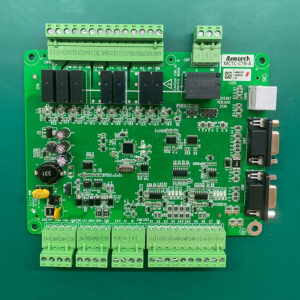In the world of vertical transportation, traction elevator components play a crucial role in ensuring efficient and smooth operations. These components, consisting of various parts and mechanisms, work together seamlessly to provide safe and reliable transportation in buildings of all sizes. Let’s delve into the different components and their importance in optimizing vertical transportation.
Table of Contents
ToggleTraction machine
One of the key components of a traction elevator is the traction machine, which is responsible for lifting and lowering the elevator car. This machine utilizes a system of ropes or belts, known as hoisting ropes, that are connected to a motor. As the motor rotates, the hoisting ropes move the elevator car up and down. The efficiency of the traction machine is vital for the overall performance of the elevator. By using energy-efficient motors and advanced control systems, modern traction machines consume less power, reducing energy consumption significantly. This not only benefits the environment but also leads to cost savings for building owners and operators.
Control system
Another important component is the control system, which governs the movement and operation of the elevator. Advanced control systems utilize sophisticated algorithms and sensors to optimize the elevator’s performance. For example, an intelligent control system can analyze the traffic patterns within a building and adjust elevator allocation accordingly. By efficiently distributing the elevator cars, passengers experience reduced waiting times and faster travel, enhancing the overall vertical transportation experience.
Door systems
Door systems are yet another essential component of traction elevators. Efficient door systems ensure smooth and safe entry and exit for passengers. High-quality door sensors, such as infrared sensors, prevent the doors from closing if someone or something is in the way. Additionally, modern door systems incorporate energy-saving features, such as automatic closing after a certain period of time, reducing energy waste. These small but significant enhancements contribute to the overall efficiency of vertical transportation.
Elevator cabs
Furthermore, elevator cabs and their interior components also play a crucial role in creating an optimal transportation experience. Designing cabins with materials that minimize vibrations and noise levels can greatly enhance passenger comfort. Moreover, incorporating energy-efficient lighting and ventilation systems reduces energy consumption, making the elevator more sustainable.
When it comes to the advantages of traction elevator components, customers pay close attention to safety, reliability, and energy efficiency. Safety is a top priority, and traction elevators are equipped with various safety features to ensure the well-being of passengers. From emergency stop buttons to fire-rated doors, these components work together to provide a secure environment. Reliability is another crucial factor, as elevator downtime can disrupt the flow of people and goods within a building. By investing in high-quality traction elevator components, building owners can minimize maintenance and repair needs, leading to uninterrupted vertical transportation.
The application fields of traction elevator components are vast and diverse. From residential buildings to commercial complexes, traction elevators are an integral part of modern infrastructure. Additionally, in specialized environments such as hospitals and airports where the transportation demands are high, traction elevators with efficient components ensure smooth and timely movement of people and equipment.
In conclusion, traction elevator components play a vital role in optimizing vertical transportation. From energy-efficient traction machines to advanced control systems and reliable door systems, every component contributes to the overall efficiency and performance of the elevator. By focusing on safety, reliability, and energy efficiency, customers can enjoy a seamless and comfortable transportation experience. As technology continues to advance, the future of traction elevator components will undoubtedly bring even greater advancements to vertical transportation, revolutionizing the way we move within buildings.


